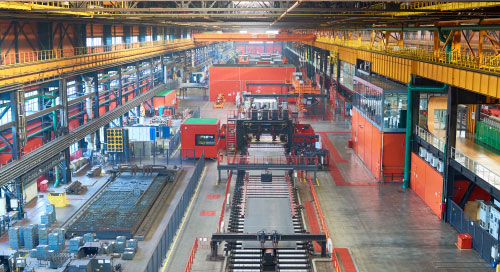Fill form to unlock content
Error - something went wrong!
Your content is just a step away. Please submit below.
Thank you!
Industrial Automation Fuels Evolution in Tech Distribution

As industrial automation progresses, manufacturers are becoming more agile by placing compute and analytics at the edge, where data is created. This requires new applications, hardware, and expertise to connect everything—from sensors to industrial PCs (IPCs), to on-premises servers, and to data centers in the cloud.
Ultimately, the goal is to automate as much of the manufacturing process as possible so plants can run 24/7 with minimal human interference. It’s a gradual process. Currently, manufacturers focus on building functionality at the edge. It’s another step in the continuum of industrial automation and IT/OT convergence to drive flexibility, operational efficiency, safety improvements, and cost reduction.
Technologies such as AI, computer vision, and performant edge compute enable use cases such as real-time defect detection and quality control, employee safety monitoring, inventory tracking, and predictive machine maintenance. And they enable flexibility so manufacturers can make rapid changes. For example, a production line generating thousands of units of a single product can quickly be switched to a custom order, and then back again.
“Being more agile on the factory floor certainly requires lots of processing power, and a lot of flexibility in the way you manage production,” says Ulrich Schmidt, Segment Director High End Processing at EBV Elektronik, an Avnet company.
As the IIoT becomes mainstream, electronic distributors of and hardware components must evolve with it. And EBV is moving forward to play a pivotal role in industrial automation—providing expertise and consulting services to the OEMs, machine builders, and solutions integrators that deliver industrial systems to manufacturers.
#EBV today serves as an extension of its embedded suppliers, adding value along the #SupplyChain by delivering not just industrial #hardware but also expertise. @EBVElektronik via @insightdottech
Industrial Automation: From Components to Solutions
EBV today serves as an extension of its embedded suppliers, adding value along the supply chain by delivering not just industrial hardware but also expertise. On top of its traditional services such as the logistics of sourcing products and delivering them to its assembly and integration partners, the company employs a full team of experts, including field application engineers (FAEs), who take part in designing and assembling solutions.
“We were known as a typical component distributor. But over the course of time, we’re at a point where we don’t just deliver the bare components for hardware design, but also modules and industrial PCs—complete processing systems that we can sell through our channel,” says Schmidt. “We act as the extended arm for our suppliers and a consultant to our customer base. We have to have experts in-house to give them valuable guidance.”
With that comes a stronger emphasis on software. Modern manufacturing systems must increasingly be controlled by open-standards software, as opposed to running solely on proprietary controllers and protocols. EBV has invested in building expertise in software-driven areas such as automated motor control, quality control, and safety monitoring, for example.
EBV’s customers consist primarily of the OEMs that build systems for midsize manufacturers—those that aren’t large enough to source their technology directly from embedded hardware suppliers. And its solutions integrator customer base increases as EBV sharpens its focus on providing complete products and services.
“Our FAEs are basically the first line of technical support to address all sorts of questions with a customer, figuring out what the needs are and which direction a customer is heading,” Schmidt says.
When the situation calls for it, EBV uses what it calls the “speedboat” approach. This consists of getting partners involved in building a solution requiring specific types of expertise, such as electromechanics. Sometimes the partner can be a team of experts from industrial distributor giant Avnet, EBV’s parent company.
IT/OT Convergence at the Edge
With more open and standards-based IPCs play a central role in IT/OT convergence and automation, making the ability for real-time data analytics a reality. While this creates more flexibility on the factory floor, it boosts the need for more power.
“Whenever you have higher demand for processing power, that’s where Intel comes into play,” says Schmidt. “Intel provides the CPUs and modules for infrastructure at the near edge, where the data is generated, and at the far edge, where on-premises servers and systems reside.”
Need for performant computing will continue to loom large for manufacturing applications such as anomaly detection and predictive machine maintenance. And solutions based on emerging technologies like augmented reality, virtual reality, and autonomous robots are on the near horizon.
In time, perhaps the edge will even host the quantum technology that led to the 2022 Nobel Prize in Physics. “I think there will be more evolution in this area. There’s so much innovation. It’s a fascinating area we’re operating in,” says Schmidt.
Edited by Georganne Benesch, Editorial Director for insight.tech.